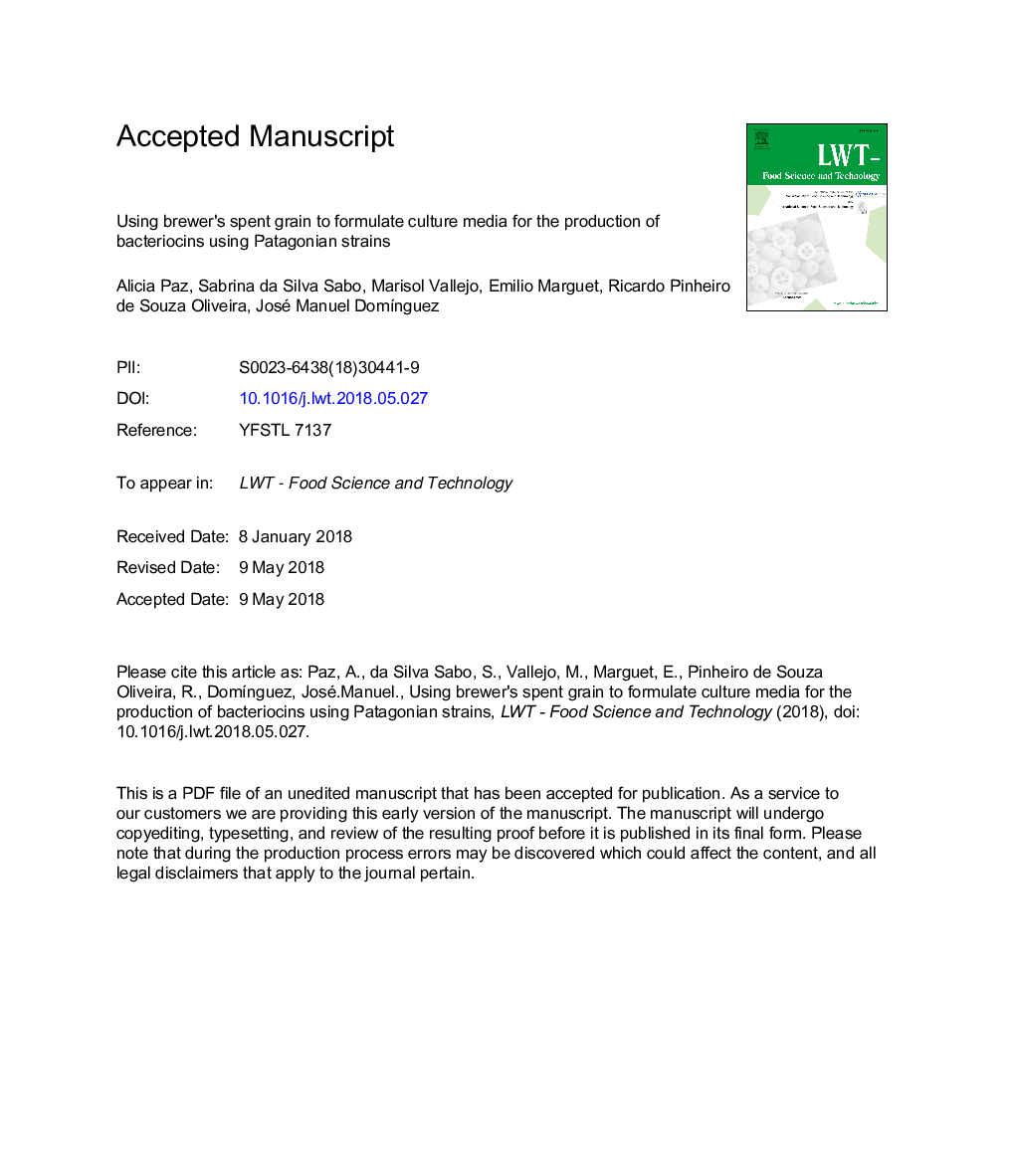| Article ID | Journal | Published Year | Pages | File Type |
|---|---|---|---|---|
| 8890379 | LWT - Food Science and Technology | 2018 | 27 Pages |
Abstract
This study evaluates the use of hemicellulosic hydrolyzates, derived from brewer's spent grain (BSG), as a means of generating bacteriocins. The producer strains, Lactococcus lactis Tw11 and Enterococcus mundtii Tw492, were isolated from animals of Argentine Patagonia. Different culture formulations were tested, and antimicrobial activity was determined against Listeria monocytogenes CECT-934. The presence of Tween 80 allowed the release of bacteriocins produced by both strains, with inhibition halos of 15.46â¯mmâ¯Â±â¯0.05 using L. lactis Tw11, and 24.47â¯mmâ¯Â±â¯0.09 using E. mundtii Tw492. Also, under these conditions the concentration of lactic acid was seen to increase to 3.21â¯gâ¯Lâ1 ± 0.12 using L. lactis Tw11, yet remained very similar (2.45â¯gâ¯Lâ1â¯Â±â¯0.01) with E. mundtii Tw492. The activity of the bacteriocins was scarcely affected by additional supplementation with salts. This research suggests that BSG and other similar materials can be used in the production of bacteriocins employing ecofriendly methods.
Keywords
Related Topics
Life Sciences
Agricultural and Biological Sciences
Food Science
Authors
Alicia Paz, Sabrina da Silva Sabo, Marisol Vallejo, Emilio Marguet, Ricardo Pinheiro de Souza Oliveira, José Manuel DomÃnguez,
